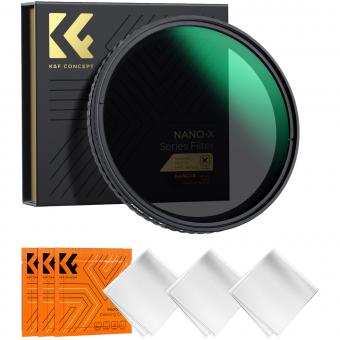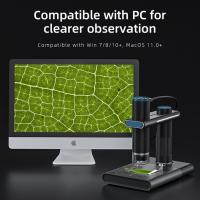Are There Microscopic Bugs On Your Skin ?
Yes, there are microscopic bugs on your skin. The human skin is home to a diverse community of microorganisms, including bacteria, fungi, and mites. One type of mite that lives on human skin is called Demodex. These mites are usually harmless and feed on dead skin cells and oils, but in some cases, they can cause skin problems such as rosacea. However, it's important to note that the vast majority of these microorganisms are beneficial and play a crucial role in maintaining healthy skin. They help to protect the skin from harmful pathogens, regulate the skin's pH balance, and support the immune system.
1、 Skin microbiome
The answer is "Skin microbiome." The skin is home to a diverse community of microorganisms, including bacteria, fungi, viruses, and mites. These microorganisms collectively make up the skin microbiome. While some of these microorganisms can be harmful and cause infections, many of them are beneficial and play important roles in maintaining skin health.
Recent research has shown that the skin microbiome is more complex and diverse than previously thought. The composition of the skin microbiome can vary depending on factors such as age, gender, diet, and environmental exposure. Additionally, the skin microbiome can be influenced by the use of topical products such as soaps, moisturizers, and cosmetics.
One common misconception is that there are microscopic bugs on the skin. While there are mites that live on the skin, they are not harmful and are a natural part of the skin microbiome. These mites, known as Demodex, are found on most people's skin and are typically harmless. In fact, they may even play a role in regulating the skin microbiome and preventing infections.
Overall, the skin microbiome is a complex and dynamic ecosystem that plays an important role in maintaining skin health. While there are microorganisms on the skin, including mites, they are a natural part of the skin microbiome and are not harmful in most cases.
2、 Demodex mites
Yes, there are microscopic bugs on your skin, and one of the most common types is Demodex mites. These mites are tiny, eight-legged creatures that live in the hair follicles and sebaceous glands of humans and other mammals. They are usually harmless and go unnoticed, but in some cases, they can cause skin problems such as rosacea and acne.
Recent research has shed new light on the prevalence and behavior of Demodex mites. Studies have shown that almost everyone has these mites on their skin, with some estimates suggesting that they may be present in up to 100% of adults. The mites are most commonly found on the face, particularly around the nose, eyebrows, and eyelashes.
While Demodex mites are generally considered harmless, there is some evidence to suggest that they may play a role in certain skin conditions. For example, studies have found that people with rosacea have higher levels of Demodex mites on their skin than those without the condition. However, it is still unclear whether the mites are a cause or a consequence of the skin condition.
Overall, while the thought of microscopic bugs living on our skin may be unsettling, Demodex mites are a normal and largely harmless part of the human microbiome.
3、 Staphylococcus epidermidis
There are microscopic bugs on your skin, and one of the most common ones is Staphylococcus epidermidis. This bacterium is a normal resident of the skin microbiome, which is the collection of microorganisms that live on our skin. Staphylococcus epidermidis is a type of bacteria that is typically harmless and does not cause any health problems. In fact, it can even be beneficial by helping to protect the skin from harmful pathogens.
Recent research has shown that the skin microbiome plays an important role in maintaining skin health and preventing disease. The balance of microorganisms on the skin can be disrupted by factors such as antibiotics, hygiene practices, and environmental factors. This can lead to an overgrowth of harmful bacteria, which can cause skin infections and other health problems.
Staphylococcus epidermidis is one of the bacteria that can help to maintain the balance of the skin microbiome. It produces antimicrobial peptides that can help to kill harmful bacteria and prevent infections. Additionally, it can help to regulate the immune system and prevent inflammation.
Overall, Staphylococcus epidermidis is a common and important member of the skin microbiome. While it is often associated with infections, it is typically harmless and can even be beneficial for skin health. Maintaining a healthy balance of microorganisms on the skin is important for overall skin health and preventing disease.
4、 Malassezia yeasts
Yes, there are microscopic bugs on your skin, including Malassezia yeasts. These yeasts are a type of fungus that naturally live on the skin of humans and animals. They are found in areas of the body that are rich in oil glands, such as the scalp, face, and upper chest.
While Malassezia yeasts are generally harmless, they can sometimes cause skin conditions such as dandruff, seborrheic dermatitis, and folliculitis. These conditions are characterized by redness, itching, and flaking of the skin.
Recent research has shed new light on the role of Malassezia yeasts in skin health. It has been found that these yeasts play a crucial role in maintaining the skin's barrier function, which helps to protect against infection and other environmental stressors. In addition, Malassezia yeasts have been shown to interact with the immune system in ways that may help to prevent the development of certain skin diseases.
Overall, while Malassezia yeasts may sometimes cause skin problems, they are an important part of the skin's microbiome and play a vital role in maintaining skin health.



































